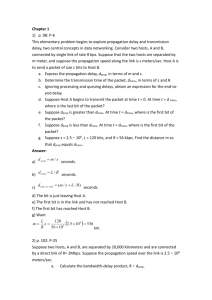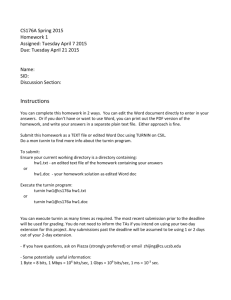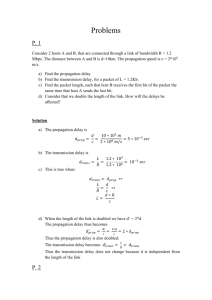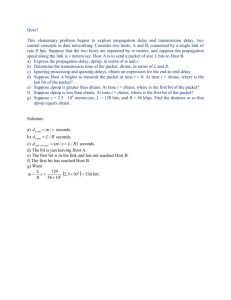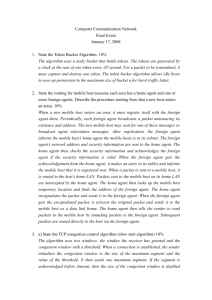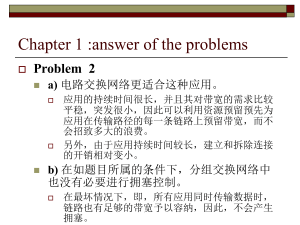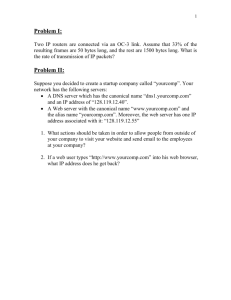CISC856 Homework: Congestion Control for High Bandwidth
advertisement
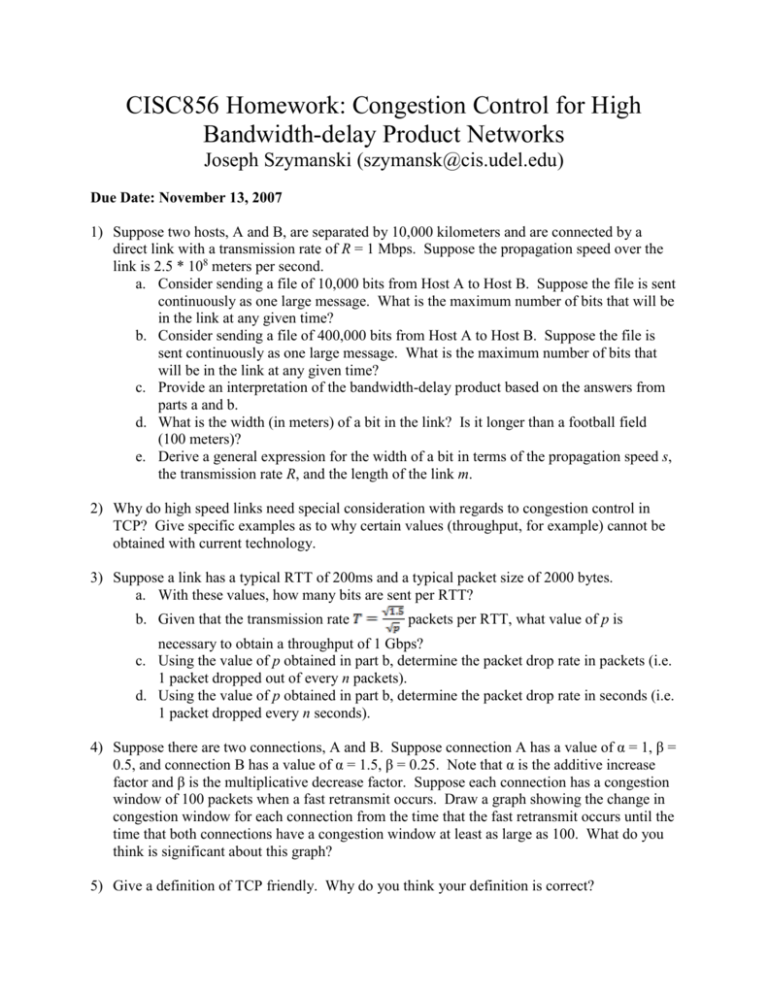
CISC856 Homework: Congestion Control for High Bandwidth-delay Product Networks Joseph Szymanski (szymansk@cis.udel.edu) Due Date: November 13, 2007 1) Suppose two hosts, A and B, are separated by 10,000 kilometers and are connected by a direct link with a transmission rate of R = 1 Mbps. Suppose the propagation speed over the link is 2.5 * 108 meters per second. a. Consider sending a file of 10,000 bits from Host A to Host B. Suppose the file is sent continuously as one large message. What is the maximum number of bits that will be in the link at any given time? b. Consider sending a file of 400,000 bits from Host A to Host B. Suppose the file is sent continuously as one large message. What is the maximum number of bits that will be in the link at any given time? c. Provide an interpretation of the bandwidth-delay product based on the answers from parts a and b. d. What is the width (in meters) of a bit in the link? Is it longer than a football field (100 meters)? e. Derive a general expression for the width of a bit in terms of the propagation speed s, the transmission rate R, and the length of the link m. 2) Why do high speed links need special consideration with regards to congestion control in TCP? Give specific examples as to why certain values (throughput, for example) cannot be obtained with current technology. 3) Suppose a link has a typical RTT of 200ms and a typical packet size of 2000 bytes. a. With these values, how many bits are sent per RTT? b. Given that the transmission rate packets per RTT, what value of p is necessary to obtain a throughput of 1 Gbps? c. Using the value of p obtained in part b, determine the packet drop rate in packets (i.e. 1 packet dropped out of every n packets). d. Using the value of p obtained in part b, determine the packet drop rate in seconds (i.e. 1 packet dropped every n seconds). 4) Suppose there are two connections, A and B. Suppose connection A has a value of α = 1, β = 0.5, and connection B has a value of α = 1.5, β = 0.25. Note that α is the additive increase factor and β is the multiplicative decrease factor. Suppose each connection has a congestion window of 100 packets when a fast retransmit occurs. Draw a graph showing the change in congestion window for each connection from the time that the fast retransmit occurs until the time that both connections have a congestion window at least as large as 100. What do you think is significant about this graph? 5) Give a definition of TCP friendly. Why do you think your definition is correct?
